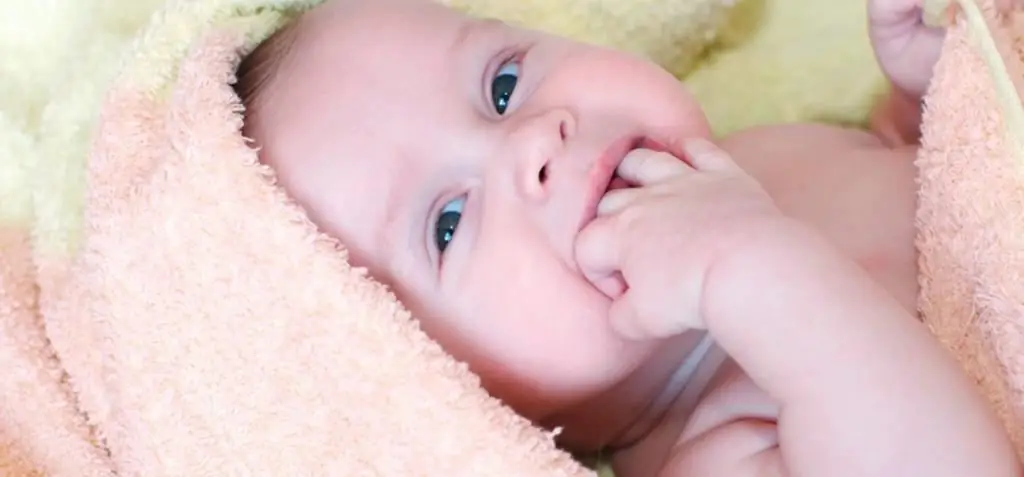2026 Author: Priscilla Miln | [email protected]. Last modified: 2025-01-22 17:55:15
Young parents, faced with the flowering of babies for the first time, begin to panic terribly. But doctors assure that this is the normal condition of a child a few days old. Today we will find out what it is - the flowering of babies, why it appears, how to distinguish it from allergies (maybe mom ate something forbidden, and then breastfed the baby), how to cure and what not to do.
Definition

Blossoming of newborns is a popular definition of the disease, in medical terminology it sounds like neonatal cephalic pustulosis. This is not a contagious disease, although it looks like a skin disease that can be transmitted to another person.
Blooming appears in babies on the face, sometimes on the head. As such, treatment is not required, the skin condition returns to normal after a while: it can be either a couple of weeks or several months. Here's how to speed upprocess and avoid complications.
What does a baby bloom look like?
For any suspicious spots and pimples on children's skin, you need to see a doctor, you can not make a diagnosis yourself. Babies are prone not only to flowering babies, but also to many other skin diseases, including seborrheic dermatitis, eczema, and milia. Also, a child may have an allergy, and it is very similar to flowering, we will tell you how to distinguish it later.
Flowering is characterized by:
- The appearance on the baby's face of small reddish pimples, inside of which pus is noticeable. Particularly strong rashes are often found in the forehead, on the nose, cheeks. Less common is a rash on the scalp. Even less often - on the back, neck, chest.
- Flowering babies begin at an early age, most often the rash appears between the 2nd and 4th weeks from birth.
- When the baby is restless, pimples are more visible.
- After pimples, peeling is observed.
Why do babies "bloom"?

Specialists tend to argue that this condition of children is associated with hormones transferred from the mother at the end of pregnancy. These hormones stimulate the sebaceous glands, and a rash appears. Gradually, the level of transferred hormones decreases, the baby's skin condition returns to normal, and soon the parents get a ruddy baby with perfect clean skin!
The mother herself can enhance flowering if she does not follow a special diet and hygiene during breastfeeding. Apart fromflowering, from a lack of hygiene, a child may develop various skin diseases caused by fungi and pathogenic bacteria. If the diet is not maintained, acne develops.
Yet flowering is much more common than skin diseases. In second place in frequency is allergy, and it can easily be mistaken for flowering. If the latter condition does not pose a threat to the life and he alth of the baby, then the first one needs to be recognized faster and get rid of it. Next, we will learn how to distinguish flowering from an allergy in a baby.
How to understand that the baby is not allergic, but flowering?

Young parents, examining the baby's skin, begin to doubt whether it is flowering or an allergic reaction. Both conditions appear in children up to six months very often, they are very similar in appearance. How do you tell them apart?
- Both allergies and blooms mostly affect the face. But in the first case, there will be more rashes on the cheeks, while the flowering is concentrated mainly in the center of the face.
- Both states have a reddish tinge. Children's acne is not itchy reddish pimples, but allergies are swollen rashes that cause itching, the child is consistently naughty, as this condition worries him. The baby loses his appetite, diarrhea may appear. If so, contact your pediatrician as soon as possible.
There is a photo of flowering in babies in the publication, and you can see how the skin looks like. Allergy is very easy to distinguish, one has only to visually compare bothstatus.
If you have any doubts, don't hesitate to see a GP or dermatologist who can tell you exactly what the problem is.
Treatment
If a baby is diagnosed with flowering (acne, neonatal cephalic pustulosis), then you can calm down and just wait for the baby's skin to become pink, smooth, beautiful again! No treatment required.
Many mothers, trying to speed up the process of "recovery" of the baby, begin to engage in amateur activities and make mistakes. Which? Let's talk further.
Smear rashes with brilliant green?
As soon as dubious spots appear on the baby's face, parents rush to smear them with something. Often Zelenka, iodine, wiping with potassium permanganate are used. It is strictly forbidden to use all this, you can only harm the baby by rewarding him with an extensive skin burn in addition to everything!
Understand, rashes only bother you, but not the baby, he simply does not feel them. Therefore, it is not necessary to cauterize with brilliant green or other means, it is not necessary to use powders and hormonal ointments!
Can I pop pimples?

Never try to squeeze out rashes. not only will you only aggravate the situation and get even more rashes, but you will also introduce an infection that will lead you to long-term treatment with a dermatologist.
Even squeezing with sterile hands is dangerous. You can injure the thin epidermis of the baby, he will have scars for a long time.
Oilsand baby lotions
When a new person is born, his parents often begin to "confuse with a toy", which they often try to wash, then rub with a variety of oils and lotions. Of course, all this preserves the softness of baby skin, prevents overdrying, but only when used on he althy epidermis!
You can not use oils and lotions if the flowering of babies has begun. Komarovsky (like other pediatricians) claims that all these products, including baby cream, powder, should be put away in a drawer until the rash completely disappears. The fact is that all the mentioned products clog pores, do not allow the skin to breathe and cleanse normally, so the rash only gets bigger, it does not go away longer. Then use lotions only as needed, if you really need it. Let your baby's skin breathe calmly, rest from all chemicals.
Hygiene

As you can see from the photo, flowering in babies looks like it becomes scary for the skin: how to clean it, how to wash a child, will the epidermis be damaged during water procedures? You should not be afraid of all this, you just need to properly care for the skin during its flowering:
- Buy specialized soap for children's sensitive skin. This soap does not dry, does not clog pores, gently and gently cleanses.
- Apply soap to a cotton pad or palm. Gently wash your baby's face in circular motions several times a day. Apply clean water to the skin first, thensoapy procedure, then rinse gently.
After washing, be sure to gently wipe the baby's face dry, water should not remain on the skin. The fact is that moisture only irritates pimples, and the child begins to feel discomfort on the skin.
Protect your skin from injury

Child should not scratch the skin. Any wounds, scratches during flowering can cause infection, and the baby will begin to suffer from a more serious skin ailment. To protect the baby from himself, constantly keep his nails in a well-groomed condition, cut off the regrown edge in time. Put little "scratches" on the handles.
Antibacterial measures
When flowering, it is important that bacteria do not get on the skin. To do this, you will need to consistently change your baby into clean clothes, change bedding every day, and use towels only once. After washing, you can not iron linen and clothes, it is important to do this before applying (put on, lay down, wipe). Ironed things are the assurance of sterility!
Advice for moms

If the baby has a flowering on the face (you can evaluate the photo of the condition above), then to speed up his recovery, you need to start following a diet, of course, if breastfeeding is used. Give up fatty foods, unhe althy foods (s alty, smoked including). Drink plenty of water, as it cleanses the body of toxins (which can be passed to the baby through milk), eat permittedfruits.
Recommended:
Restless sleep in babies: grunting, fidgeting, shuddering, other symptoms, causes, calm bedtime traditions, advice from moms and recommendations from pediatricians
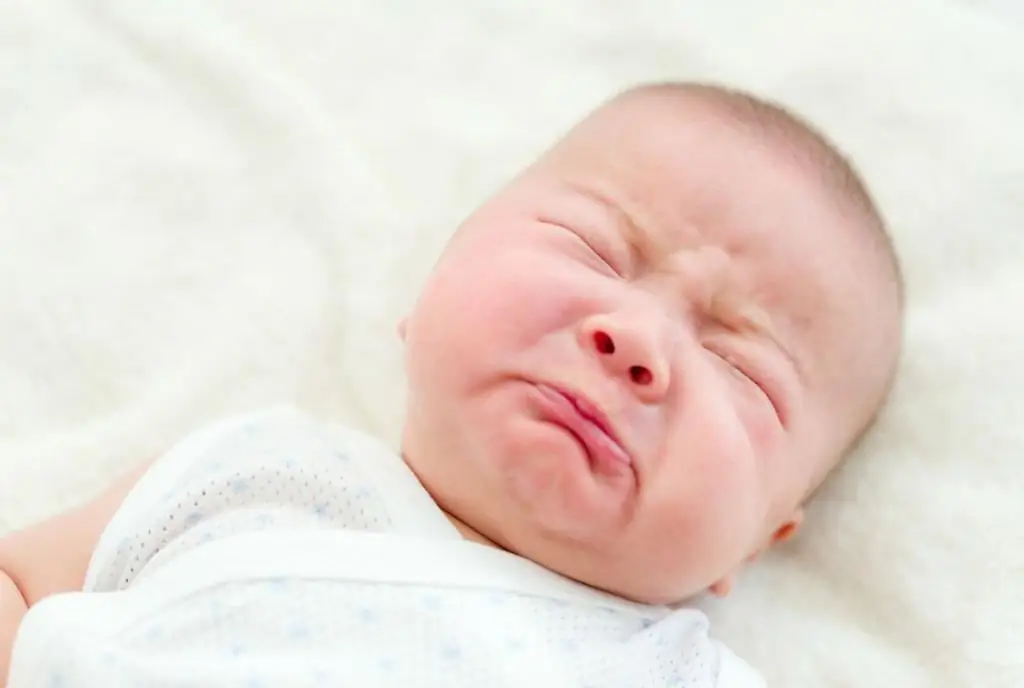
Many new parents are terribly upset by the fact that the baby has restless sleep. In addition, mom and dad themselves cannot rest normally because of a sleepless child. In this article, we will analyze the causes of insomnia in young children
Hyperexcitability in infants: causes, symptoms, treatment, recovery period and advice from the best pediatricians
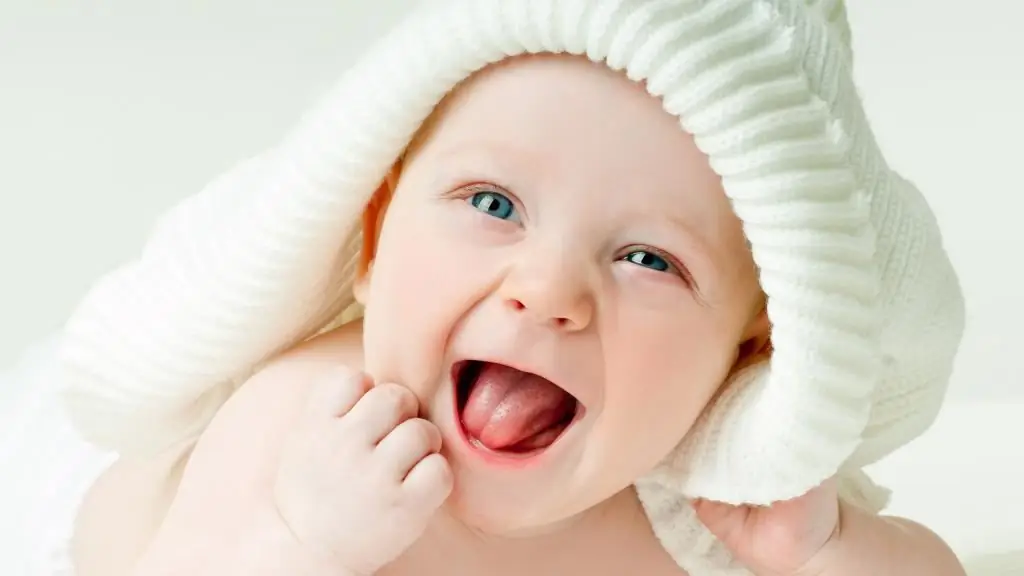
Hyperexcitability in infants is a fairly common problem today. The treatment process includes quite a lot of different elements that give results only when used together. The task of parents is not to miss the moment of healing
Yellow whites of the eyes in a newborn: causes, description with photos, possible problems and recommendations from pediatricians

Yellow whites of the eyes of a newborn indicate the presence of icteric pathology. If the cause is not in a pathological condition, then the imperfection of the baby's body causes a similar symptom. Doctors diagnose the baby's temporary inability to adapt to new conditions of existence outside the mother's womb. Often, pathology is detected in premature babies. However, yellow eyes can be a sign of dangerous diseases
Plaque on the tongue of a baby: causes, ways to clean the tongue of a child, treatment, advice and recommendations of pediatricians
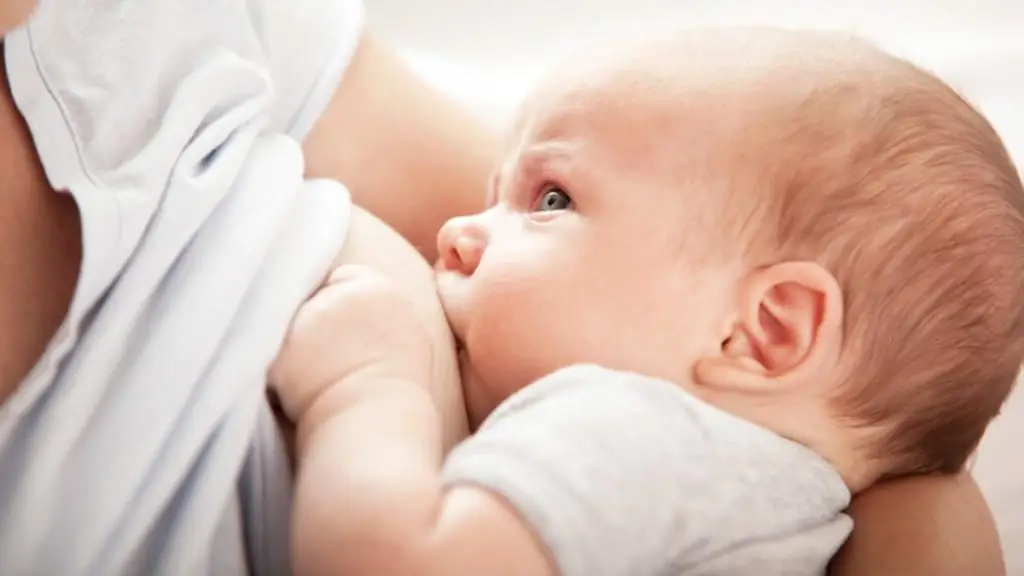
A young mother tries to notice the first signs of a disease in her baby, so she looks closely at every crease and speck on the baby's skin. Many parents have met with such a phenomenon as a white coating on the tongue of a baby. In most cases, this is considered the norm, but there are exceptions in which you need to see a doctor. What factors need to be considered? Why does the baby have a white coating on the tongue?
How to distinguish allergies from flowering in newborns: types, description, causes, similarities, differences and treatment
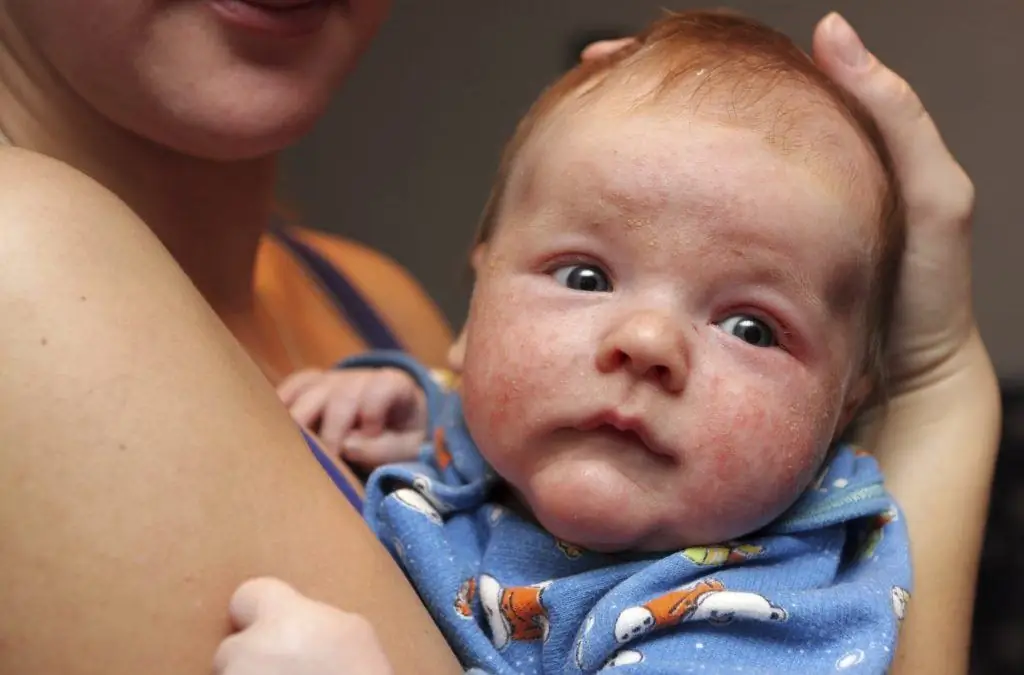
Acne or flowering in newborns may appear from the first days of life. It occurs in the form of acne or redness on the body of the baby. Most often on the face, neck or head. Pimples and spots can be white, yellow or reddish. In boys it appears due to an excess of mother's hormones, in girls due to the greasy upper ball of the epidermis

